
Excel Farms is the new owner of the Ballandry Portfolio near Griffith in the NSW Riverina. Photo: CBRE
THIS week’s property review showcases a state-by-state snapshot of the defining property sales across Australia, as reported over the past 12 months.
This is not a definitive list, as other significant properties have sold in off-market deals.
It is, however, interesting to look back over the past year at the prices and size of the more significant cropping and mixed-farming properties that have changed hands.
Biggest transactions
JANUARY: International clothing manufacturer Zhejiang Sunrise Garment Group, operating as Smart Shirts, paid around $120 million for Gundaline, one of Australia’s largest irrigated farming operations.
Located near Carrathool in the Murrumbidgee Irrigation area of southern New South Wales, the 14,916ha holding boasts 6000ha of first-class flood irrigation, with the balance comprising dryland cropping and grazing.
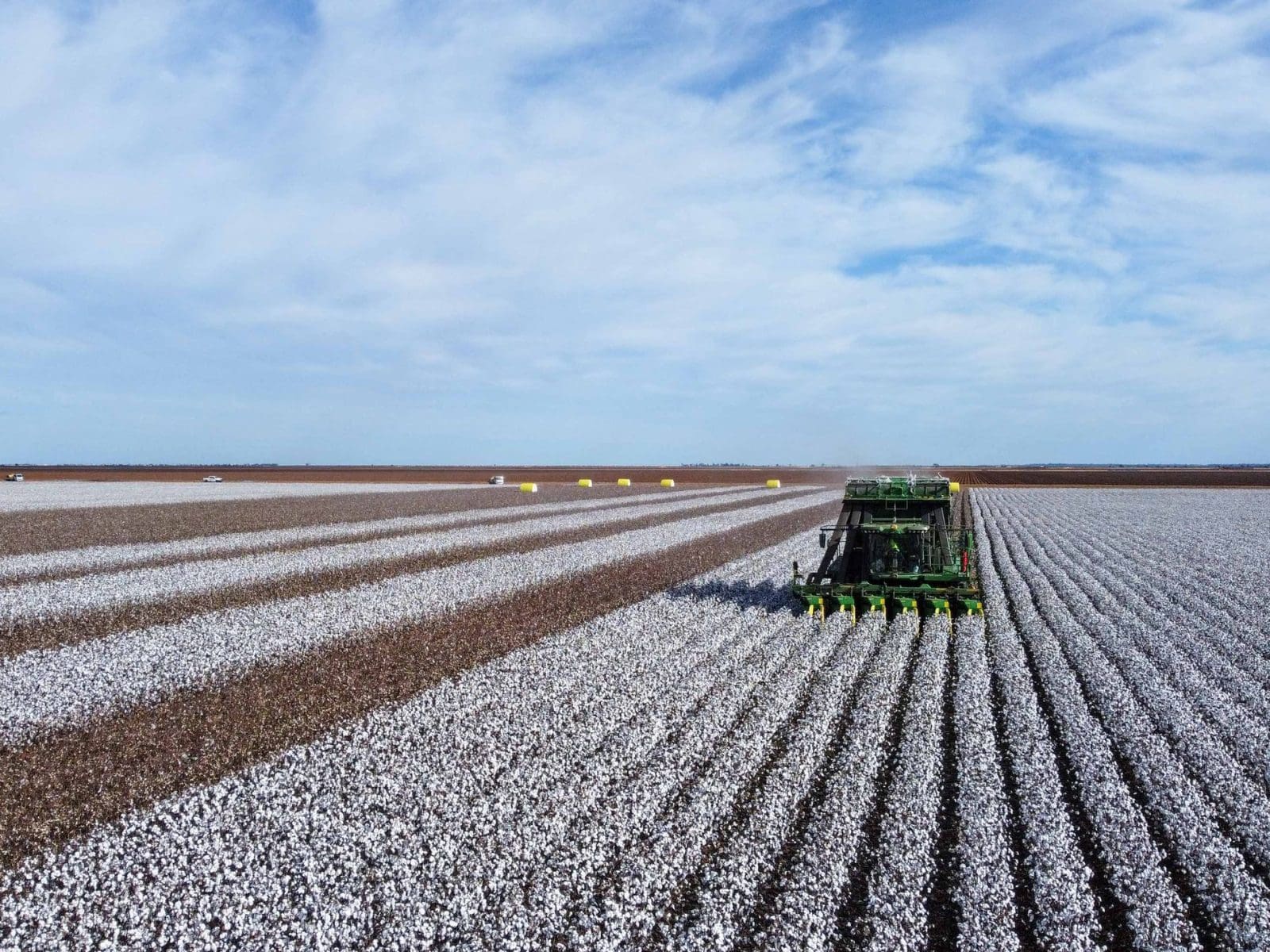
Gundaline Station this year was sold by Dutch firm Optifarm to a Chinese investor. Photo: LAWD
Described as an A-Grade agricultural asset, Gundaline grows cotton, soybeans, wheat, canola and faba beans.
A further 750ha has been identified as having potential for intensive horticulture development.
The asset has secure access to surface and groundwater entitlements, as well as substantial water storages which total in excess of 17,000ML.
Western Australia
JANUARY: Cherylton Farms, an institutional mixed farming opportunity located in the Great Southern region, achieved what was described as a “record-breaking” price in excess of $100M on a walk-in walk-out basis.
Purchased by Victorian-based Excel Farms with backing from Canadian investment firm Fiera Comox, the 8554ha holding spans two non-contiguous high-performing enterprises based on dryland cropping, sheep, lamb, and cattle.
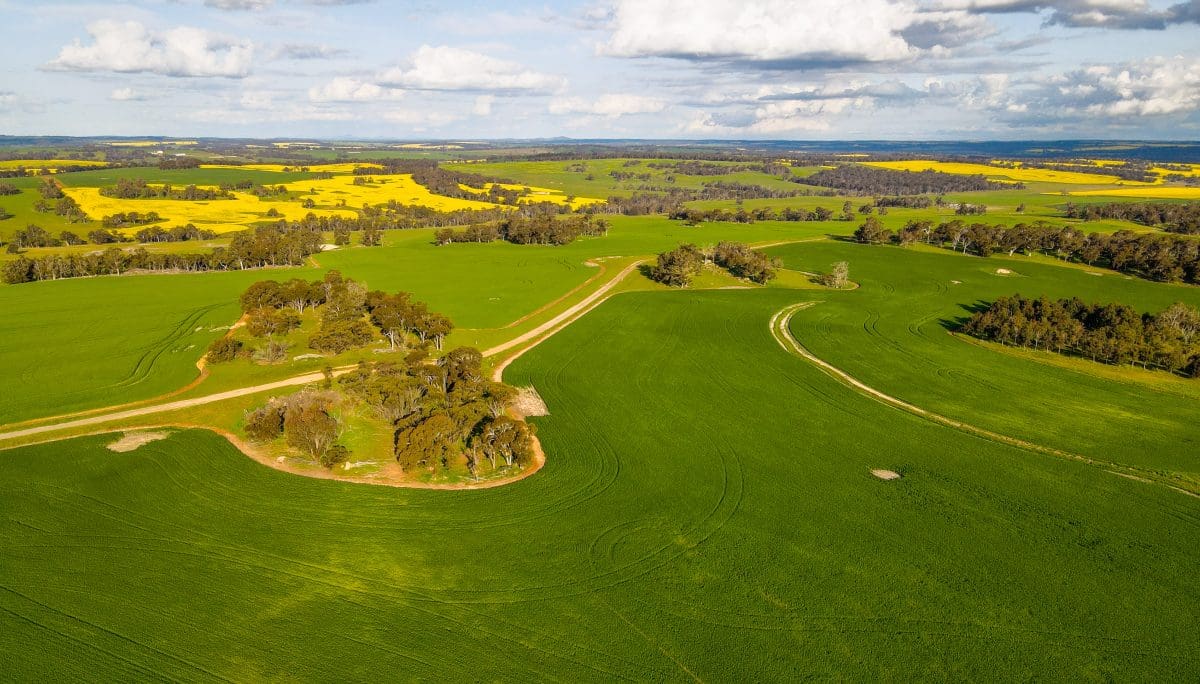
Cherylton Farms marks Excel Farms’ first WA purchase. Photo: LAWD
Situated in a 551mm average rainfall region, the well-watered property benefits from high-quality soil types and undulating topography.
Infrastructure includes more than 300km of new fencing, 30 silos, 10 sheds, including a 2000-tonne grain/fertiliser shed, four shearing sheds, one with 17 stands, 10 sets of sheep yards, two sheep feedlots which can hold 6000 head, a cattle feedlot, and nine residences.
MAY: Energy giant BP’s Low Carbon Australia paid a district record $23M for the 22,568ha Daisy Downs offering which presents a carbon opportunity.
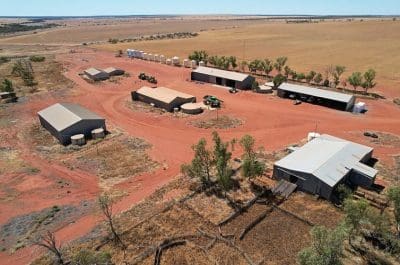
WA’s Daisy Downs sold privately to Low Carbon Australia. Photo: Ray White Rural
Located north of Mullewa and 120km from Geraldton in the state’s Mid West, the country features high yielding-capacity red-loam soils and some yellow sandplains with a large cropping program that could be expanded.
The non-arable portion is suitable for a livestock enterprise or a carbon project.
Following the sale, BP announced it would establish wind and solar-powered green hydrogen production facilities on Daisy Downs and lease the agricultural business to a neighbour for cropping.
Daisy Downs was sold with extensive infrastructure including a five-bedroom home, numerous silos and sheds.
Queensland
FEBRUARY: Two buyers paid $65M for Emerald’s 4386ha Gemfields Portfolio, two non-contiguous properties featuring opportunity to grow irrigated cotton and wheat, and an established macadamia orchard.
The 3607ha Cypress and Bauhinias portion was purchased by high-profile Emerald-based grower Craig Pressler, 2PH Farms, while the 779ha Gemfields, with 455ha of macadamias, holding was secured by Canadian-based investment firm, Manulife.
The aggregation has 728ha of laser-levelled flood irrigation which could be expanded for cotton production, 125ha of centre-pivot irrigation and 80ha of dryland cropping, with the balance used for grazing.
Gemfields boasts extensive water infrastructure development and availability from the Nogoa Mackenzie Supply Scheme, 6090ML of water entitlements and multiple water storages.
November: A local producer paid around $45M for the 10,619ha dryland cropping property Picardy Station, 10km east of Dysart in the Isaac region.
The station’s 7819ha dryland-cropping rotation grows sorghum in summer, chickpeas over winter and cover crops to build soil carbon in a regenerative agronomic system, with the 2800ha balance used for grazing.
Boasting some of the best soil types along Australia’s east coast, the deep self-mulching clays have a well above-average Cation Exchange Capacity, which indicates the amount of nutrient a soil can hold, of 27-60meq/100g.
Picardy Station has been baseline assessed in preparation for a sequestration project.
Its infrastructure has been described as outstanding, and includes 5300t of grain storage, numerous sheds, cattle yards and a manager’s residence.
New South Wales
NOVEMBER: Poultry pioneer David Bartter sold the 26,839ha Ballandry Station, in the Riverina district to Excel Farms, also the buyer of the abovementioned Cherylton Farms in WA.
The walk-in-walk-out sale achieved close to $120M and included 45,457ML of Murrumbidgee Irrigation Delivery Entitlements, as well as the 2023 crop.
Ballandry comprises 16 dryland cropping properties amalgamated over the past 40 years, with an annual cropping rotation across 21,833ha including wheat, barley, canola, lupins, field peas, and vetch.
Infrastructure includes 20,000t of grain and fertiliser storage, machinery sheds, workshops and plant and equipment.
AUGUST: Lawson Grains added the 13,498ha Lachlan Valley property Jemalong Station to its growing portfolio for around $85 million.
Located downstream from Forbes in the state’s Central West and offered for sale by Dutch firm Optifarm, it grows a variety of cash and fodder crops, as well as producing beef, lamb and wool.
Close to 10,000ha has been developed for dryland cropping and perennial pastures and 1562ha is suited to grazing.
The grey chocolate to red and sandy loams grow cotton, wheat, canola and oilseeds.
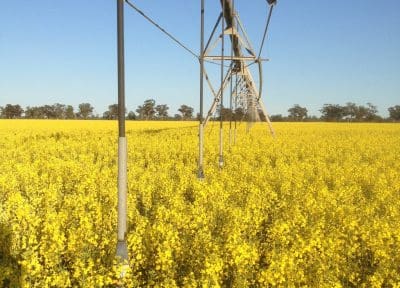
Jemalong Station includes irrigation entitlements from the Lachlan River. Photo: LAWD
Jemalong Station’s irrigation infrastructure consists of 311ha under centre pivots, 805ha of linear-move irrigation and a further 524ha of flood/border-check irrigation.
This is complemented by access to 2580ML of Upper Lachlan alluvial groundwater and 1134ML of Lachlan River General Security Water delivered via the Jemalong Irrigation Scheme.
Other improvements include a 5500t grain-storage complex, numerous sheds, a six-stand woolshed and livestock yards.
In April, the corporate grain farmer paid more than $35m for the 2868ha Green Park Aggregation in the Southern Riverina of NSW.
Located 12km west of Rand and 77km north-west of Albury-Wodonga, the versatile holding is renowned for producing cereal, legume and oilseed crops, as well as prime lamb and wool production.
Grain-only sales
JULY: A neighbour paid around $30M, or close to $6000/ha, for a 5015ha cropping aggregation in north-west NSW.
The 3325ha Nunkeri and 1689ha Loch Lomond are situated 58km south of Walgett and 65km north of Coonamble in a tightly held region known to offer value for money.
Featuring fertile self-mulching black soils with some red loam country, the country is suited to growing summer and winter crops including wheat, chickpeas, sorghum and canola.
The properties are watered by a capped and piped bore and have 4275t of grain storage in 16 silos, a 10,000t bunker, a number of residences, a machinery shed, a workshop, cattle yards and a three-stand woolshed.
Victoria
NOVEMBER: Guangxi Investment Co Ltd added the iconic Greystones estate to its already impressive portfolio for a reported $80M.
The 4033ha, operated as an extensive cropping and a superfine Merino wool enterprise, is situated near Rowsley, north-west of Melbourne.
Around 1214ha is set aside for dryland cropping, with 2808ha of native and improved pastures running 6000 sheep.
Settled in 1840, Greystones boasts an historic 13-bedroom bluestone mansion and represents an unprecedented land-bank opportunity given its proximity to Melbourne.
Infrastructure includes nine dwellings, shearers quarters, several sheds, a six-stand shearing shed and sheep and cattle yards.
South Australia
APRIL: Kynoch, an irrigated and dryland cropping and grazing property, was snapped up the Mitolo Group, in partnership with the Ontario Teachers’ Pension Plan Board and its Australian agriculture subsidiary AustOn Corporation, for more than $30M on a walk-in walk-out basis, including crops and a substantial list of plant and equipment.
The 3932ha holding is located near McCallum, near Bordertown in SA’s Upper South East.
Kynoch has 1000ha of irrigation developed over 27 centre-pivot sites, including 18 centre-pivot irrigators each watering mostly 40ha circles growing cereals, legumes, vegetables, and brassicas.
In addition to its significant 3072ML irrigation assets and water entitlements, Kynoch has a vertically integrated onion enterprise, Rowett Onions, where the vendors grow, pack and supply red and brown onions to national clients.
SEPTEMBER: The Wild Dog Creek Aggregation, spanning 1143ha across four non-contingent properties at the foothills of the southern Flinders Ranges, achieved $10.6M.
Located in the Melrose area, in the Upper Mid North region, the four broadacre cropping and hay holdings have gently undulating to relatively flat arable land, with mostly red and brown clay loams and some deep black soils.
Mark and Paul Rundle secured the adjoining 368ha Wild Dog Creek for $6M, or $16,304/ha, and the 68ha Rookhatt for more than $950,000.
The 257ha Sanders block sold to David Kumnick for $2.4M, or $9338/ha, while the 449ha The Plains sold to Raymond Morgan for $1.25m (including the existing winter crop).
Across the aggregation, infrastructure includes a home, various sheds, a shearing shed and yards, substantial rainwater storage, 1200t of grain storage, and a feedlot.
Best-performing region
An industry expert told Grain Central, up until recently, Central Qld, particularly around Emerald, was a “sleeping giant” in terms of institutional investment, and that a number of significant sales in 2023 shows buyers are recognising the region represents good value for money.
In addition to the $65M sale of the 4386ha Gemfields Portfolio mentioned above, Andrew Keeley, Gindie, in July paid $28.5M for the blue-ribbon, irrigation, dryland cropping and livestock enterprise Kingower in Qld’s Central Highlands.
The 3262ha of self-mulching and alluvial soils are located 16km north-west of Emerald and comprise 742ha of developed irrigation country, 774ha of dryland cultivation and 1539ha of grazing.
The property has 4709ML of secure water entitlements, supported by a significant overland flow and 9425ML of on-farm storage.
In summary
Disclosed 2023 cropping and irrigation property sales reported by Grain Central show:
- No properties sold in the sub $5M bracket;
- Five $5M-$10M properties sold;
- Seven $10M-$15M properties sold;
- Four properties achieved more than $15M;
Disclosed 2023 mixed-farming property sales reported by Sheep Central and Grain Central show:
- Two properties sold in the sub $5M bracket
- Five $5M-$10M properties sold;
- Ten $10M-$15M properties sold;
- 18 properties achieved more than $15M.
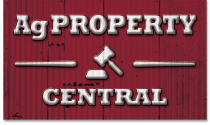
HAVE YOUR SAY